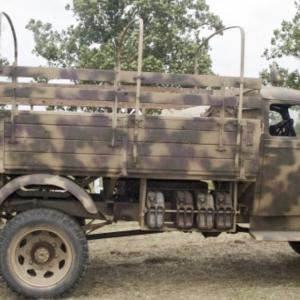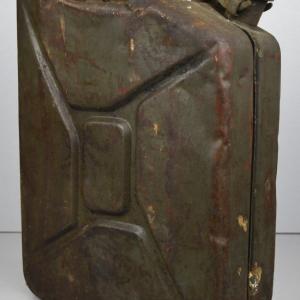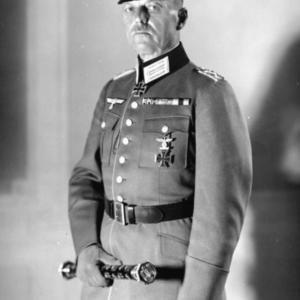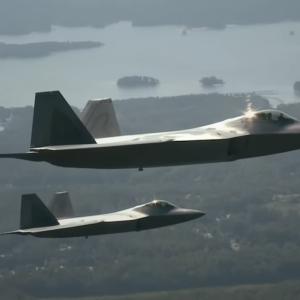
HVAR rocket
The High Velocity Aircraft Rocket, known as the HVAR or sometimes nicknamed "Holy Moses," was a 5-inch unguided rocket developed and used extensively by the United States during both World War II and the Korean War. It was designed to provide aircraft with a powerful air-to-ground weapon capable of destroying armored vehicles, fortified positions, and other strategic ground targets. Unlike earlier rockets, the HVAR maintained a consistent 5-inch diameter throughout its body, which allowed for a larger rocket motor and improved range and velocity.
The origins of the HVAR date back to late World War II, when engineers at the California Institute of Technology developed it under the direction of the National Defense Research Committee. They were tasked with creating a more powerful version of the earlier 5-inch Forward Firing Aircraft Rocket, and they achieved this by increasing the propellant load while maintaining aerodynamic stability. The HVAR’s motor burned Ballistite, a high-performance solid propellant that consisted mainly of nitrocellulose and nitroglycerine. The propellant was formed into cruciform-shaped grains that allowed for consistent and even combustion, increasing thrust without destabilizing the rocket in flight.
The rocket measured 68 inches in length and weighed approximately 134 to 140 pounds, depending on the warhead variant. It was typically armed with one of several types of warheads. These included high-explosive (HE) warheads, which contained around seven pounds of TNT; armor-piercing (AP) versions, which used a smaller explosive charge but had a hardened nose for penetrating armor; high-explosive anti-tank (HEAT) shaped charges designed for bunker busting and anti-armor roles; and white phosphorus (WP) smoke warheads for marking or incendiary purposes. In some cases, warheads intended for anti-submarine warfare or specialized demolition tasks were also used.
The HVAR was manufactured in large numbers. By the end of World War II, over one million rockets had been produced, and production continued well into the 1950s. Final assembly was handled by various U.S. military contractors and ordnance depots, while the propellant itself was manufactured primarily by companies like the Hercules Powder Company. Though exact figures from the Korean War are difficult to confirm, it is known that tens of thousands of HVARs were stockpiled and used during the conflict.
During the Korean War, the HVAR was a vital tool in the U.S. military’s close air support strategy. It was employed by a wide range of aircraft, both propeller-driven and jet-powered. The most common platforms for launching the HVAR included the F-51D Mustang, F4U Corsair, AD Skyraider, and the jet-powered F-80 Shooting Star, F-84 Thunderjet, and F9F Panther. These aircraft could carry multiple rockets under each wing. The Skyraider, for example, could carry up to 12 HVARs, and the F-84 could carry as many as 24 in certain configurations.
Pilots used the HVAR primarily against enemy bunkers, machine gun nests, supply depots, railways, and bridges. The weapon’s speed and flat trajectory made it more accurate than earlier air-to-ground rockets, even though it lacked any form of guidance system. In particular, the shaped charge variants proved useful against entrenched positions and lightly armored vehicles, while the high-explosive types were used to destroy fortifications and troop concentrations.
In combat, the HVAR proved to be effective when used in saturation attacks, where several rockets were launched in rapid succession to blanket an area. While individual rocket accuracy was limited, massed attacks often produced destructive results. Pilots typically launched HVARs in pairs or volleys, depending on the target and aircraft loadout.
The rocket’s performance during the Korean War helped define it as a transitional weapon between the older, low-speed rockets of World War II and the more advanced guided munitions that would be developed later. The HVAR offered substantial explosive power in a compact, easily deployable package. Although it was eventually phased out in favor of more sophisticated guided air-to-ground missiles in the late 1950s and 1960s, the HVAR played an important role in shaping post-war aerial weapons development.
By the end of its service life, the HVAR had demonstrated the value of high-speed, high-explosive rockets in modern warfare. It remained a staple of U.S. air power throughout the Korean conflict and influenced the design of future rockets and missiles. Its simple yet effective design, ease of manufacture, and adaptability to multiple warhead types made it one of the most widely used and impactful rockets of its era.










